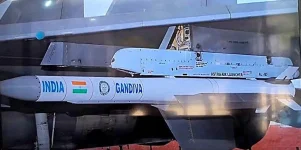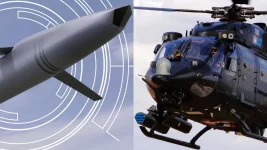- Views: 2K
- Replies: 10
India's Defence Research and Development Organisation (DRDO) is developing a new-generation guided rocket system, the Pinaka IV, which will be capable of striking targets up to 300 kilometres away.
A key feature of this advanced system is its ability to fly in a quasi-ballistic trajectory, a flight path inspired by the Pralay tactical missile, designed to make it extremely difficult for enemy air defence systems to intercept.
This development marks a major step in enhancing the country's long-range precision strike capabilities.
The Pinaka multi-barrel rocket launcher (MBRL) has been a fundamental component of the Indian Army's artillery arsenal since its induction after the Kargil War. The system has undergone significant evolution, progressing from the 40 km range of the original Mk-I to the 90 km Guided Pinaka.
The forthcoming Pinaka IV represents the most substantial upgrade yet, extending its reach to 300 km. This positions the system as a highly effective and affordable alternative to more expensive short-range ballistic missiles for destroying high-value targets like command posts, airfields, and major supply depots.
Technically, the Pinaka IV introduces considerable improvements. The new rocket features an increased calibre of 300mm, a significant upgrade from the 214mm of earlier versions, allowing it to carry more fuel and a powerful 250 kg warhead.
To ensure high precision, DRDO's Research Centre Imarat (RCI) has developed an advanced guidance, navigation, and control system, giving the Pinaka IV an accuracy of within 10 metres of its target.
Crucially, the system is designed to be compatible with existing Pinaka launch vehicles, which simplifies its integration into the Indian Army’s current and future regiments.
The most revolutionary aspect of the Pinaka IV is its advanced evasion technology, modelled after the DRDO-developed Pralay missile.
Unlike traditional artillery rockets that follow a predictable arc, the Pinaka IV can manoeuvre mid-flight and fly on a flatter, less predictable path. This quasi-ballistic trajectory, combined with other electronic countermeasures, is designed to confuse enemy radar and anti-missile systems, making interception a significant challenge for even sophisticated air defence networks like the S-400.
The importance of such evasive capabilities was recently highlighted. On May 10, 2025, India’s Medium-Range Surface-to-Air Missile (MR-SAM) system successfully intercepted a Pakistani Fatah-II guided rocket over the Sirsa region in Haryana.
While the Fatah-II was promoted as an advanced system, the successful interception exposed the vulnerabilities of rockets that lack sophisticated evasive manoeuvres, reinforcing the strategic necessity for the technologies being integrated into the Pinaka IV.
From a strategic standpoint, the Pinaka IV provides the Indian Army with an affordable option to conduct deep strikes into enemy territory without deploying more costly assets like the BrahMos or Pralay missiles.
Its cost-effectiveness allows for the possibility of launching rockets in large numbers, a tactic known as saturation strikes, which can overwhelm and defeat enemy air defences.
According to DRDO Chief Dr. Samir V. Kamat, trials for the Pinaka IV are set to begin in 2028, with the system expected to be ready for induction by 2030.
This new system also strengthens India’s military posture in the region, providing a credible response to the advanced rocket forces of potential adversaries, including China's PHL-16 system.
Furthermore, the Pinaka programme is a major success for India's "Make in India" initiative in the defence sector.
Following a significant $251 million export order from Armenia in 2023 and reported interest from nations like Nigeria and Indonesia, the Pinaka IV is set to further elevate India's standing as a key player in the global arms market.


